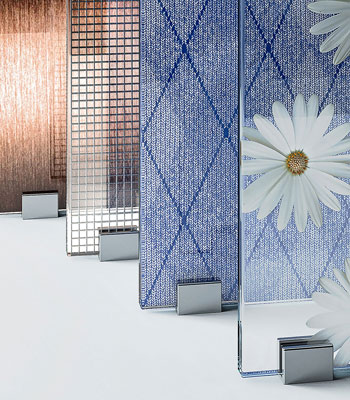Laminated Glass
0,00 €Architectural Laminated Glass
This product looks just like a normal sheet of glass but has a very different function. Energy savings, reduced noise pollution and protection against UV-radiation damages are drawing consumers’ attention more than ever before. These goals can be met by the use of architectural laminated glass sheets (toughened or normal). The laminated glass has practical resistance against severe impact, earthquake, storms and strong winds, since the broken glass particles remain bonded to the laminate interlayer.
Architectural laminated glass is produced in various colours and can also be layered with other ornamental or functional objects (wire, fabric, posters, etc.) making it a very versatile type of glass indeed. Nowadays, architectural laminated glass is being widely used in exterior design due to some of its particular advantages:
– Vibration tolerance
– Quick and easy installation (truss, holder clamp, cable, etc.)
– Combinability with other design elements
– Decorative coverage of interior surfaces and / exterior facades
Laminated Glass
0,00 €Laminated glass is produced by combining two or more sheets of float glass with one or more interlayers and is processed by autoclaving at 1400°C and pressure up to 14 bar. Polyvinyl Butyral (PVB) is the most common interlayer used in laminated glass.
Laminated Glass
0,00 €Architectural Laminated Glass
This product looks just like a normal sheet of glass but has a very different function. Energy savings, reduced noise pollution and protection against UV-radiation damages are drawing consumers’ attention more than ever before. These goals can be met by the use of architectural laminated glass sheets (toughened or normal). The laminated glass has practical resistance against severe impact, earthquake, storms and strong winds, since the broken glass particles remain bonded to the laminate interlayer.
Architectural laminated glass is produced in various colours and can also be layered with other ornamental or functional objects (wire, fabric, posters, etc.) making it a very versatile type of glass indeed. Nowadays, architectural laminated glass is being widely used in exterior design due to some of its particular advantages:
– Vibration tolerance
– Quick and easy installation (truss, holder clamp, cable, etc.)
– Combinability with other design elements
– Decorative coverage of interior surfaces and / exterior facades
Laminated Glass
0,00 €Architectural Laminated Glass
This product looks just like a normal sheet of glass but has a very different function. Energy savings, reduced noise pollution and protection against UV-radiation damages are drawing consumers’ attention more than ever before. These goals can be met by the use of architectural laminated glass sheets (toughened or normal). The laminated glass has practical resistance against severe impact, earthquake, storms and strong winds, since the broken glass particles remain bonded to the laminate interlayer.
Architectural laminated glass is produced in various colours and can also be layered with other ornamental or functional objects (wire, fabric, posters, etc.) making it a very versatile type of glass indeed. Nowadays, architectural laminated glass is being widely used in exterior design due to some of its particular advantages:
– Vibration tolerance
– Quick and easy installation (truss, holder clamp, cable, etc.)
– Combinability with other design elements
– Decorative coverage of interior surfaces and / exterior facades
Laminated Glass
0,00 €Laminated glass is produced by combining two or more sheets of float glass with one or more interlayers and is processed by autoclaving at 1400°C and pressure up to 14 bar. Polyvinyl Butyral (PVB) is the most common interlayer used in laminated glass.
Laminated Glass
0,00 €Laminated glass is produced by combining two or more sheets of float glass with one or more interlayers and is processed by autoclaving at 1400°C and pressure up to 14 bar. Polyvinyl Butyral (PVB) is the most common interlayer used in laminated glass.
Laminated Glass Structure
0,00 €Laminated glass processed by multi layer tempered glass with specific polymer space that holds together when shattered. In the event of breaking, it is held in place by the interlayer.
Laminated Glass Structure
0,00 €Laminated glass processed by multi layer tempered glass with specific polymer space that holds together when shattered. In the event of breaking, it is held in place by the interlayer.
Laminated Glass Structure
0,00 €Laminated glass processed by multi layer tempered glass with specific polymer space that holds together when shattered. In the event of breaking, it is held in place by the interlayer.










